Step-by-Step Guide to Orchard Farming in India

Introduction
Orchard farming-often called fruit farming-is a promising and rewarding agricultural opportunity in India. Thanks to the country's diverse climate and fertile soils, farmers can grow a wide variety of fruits, making it a sustainable and profitable venture. This blog walks you through the entire process of starting an orchard farm in India, from initial planning to final harvest.
1. Picking the right location:

The success of your orchard largely depends on where you set it up. Keep these factors in mind:
- Climate: Choose a location with weather conditions that suit the fruit you plan to grow. Apples and pears do well in cooler areas, while fruits like mango and banana thrive in warmer climates.
- Soil: Test the soil for fertility, drainage, and pH levels. Most fruit trees prefer loamy, well-drained soil with a neutral pH.
- Water: Ensure a steady water supply for year-round irrigation.
- Accessibility: Choose a spot that's easy to reach for transporting materials and harvested fruits.
2. Selecting suitable fruit trees:
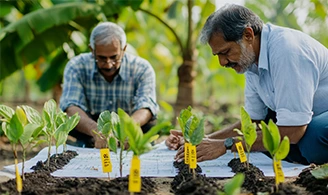
Choose your fruit trees based on local climate, soil conditions, and market demand. Here are some popular options:
- Mango: Best suited to tropical or subtropical areas.
- Apple: Grows well in cooler, temperate climates.
- Banana: Needs a hot and humid environment.
- Guava: Adaptable to both tropical and subtropical zones.
- Citrus: Prefers warm climates with moderate rainfall.
3. Preparing the land:

Proper land preparation sets the foundation for a thriving orchard:
- Clear weeds, rocks, and debris from the area.
- Plough the soil 30–40 cm deep to enhance aeration and drainage.
- Mix in organic matter like compost or manure to enrich the soil.
- Level the ground to ensure even water distribution.
4. Planting your trees:
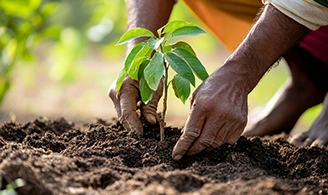
For successful planting, follow these basic steps:
- Dig holes twice as wide as the sapling's root ball.
- Place the sapling in the hole and spread the roots evenly.
- Refill the hole with soil, firm it gently, and water well.
- Mulch around the base to keep moisture in and weeds out.
5. Irrigation and water management:
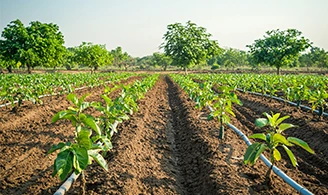
Consistent watering is crucial to orchard health:
- Install drip irrigation to deliver water efficiently and conserve resources.
- Water regularly, especially during dry periods and critical growth phases.
- Avoid waterlogging by ensuring proper drainage.
6. Fertilization and soil health:
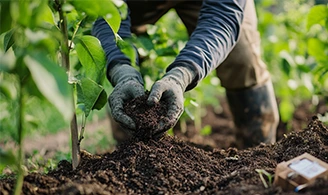
Healthy soil leads to healthy trees and good yields:
- Periodically test the soil to check nutrient levels.
- Apply fertilizers as needed, using the right quantities at the right times.
- Use organic fertilizers-like compost and manure-to improve soil structure and fertility.
7. Pruning and training the trees:
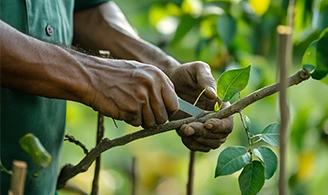
These practices help boost yield and keep trees in good shape:
- Prune young trees to form a solid structure early on.
- Remove any dead, damaged, or diseased branches.
- Thin crowded areas to improve airflow and sunlight exposure.
- Support growing trees with stakes or trellises as needed.
8. Pest and Disease Control:

Keeping your orchard free from pests and diseases is key:
- Inspect regularly for signs of trouble.
- Use integrated pest management (IPM) techniques, including biological controls and targeted treatments.
- Maintain orchard cleanliness by removing fallen leaves and fruits.
- Opt for disease-resistant plant varieties where possible.
9. Harvesting and Post-Harvest Care:

Handle your fruit with care to maintain its quality and shelf life:
- Pick fruit at the right time-look at size, color, and taste.
- Handle gently to avoid bruising or damage.
- Sort and grade the fruit by size and quality.
- Store in a cool, dry space.
- Use proper packaging and transportation to reduce spoilage and maintain freshness.
10. Marketing and Selling Your Produce:

Good marketing can boost your profits significantly:
- Identify your target markets-local, wholesale, or online.
- Create a marketing strategy with clear pricing, distribution, and promotion plans.
- Build a network of buyers, retailers, and suppliers.
- Consider exploring digital platforms for wider reach.
Conclusion
Orchard farming in India is a high-potential, sustainable venture. With careful planning, smart practices, and a bit of hard work, you can build a successful orchard and enjoy the rewards of producing fresh, high-quality fruit. Whether you're a beginner or an experienced farmer, this step-by-step guide is your path to a fruitful harvest and a thriving business.
















